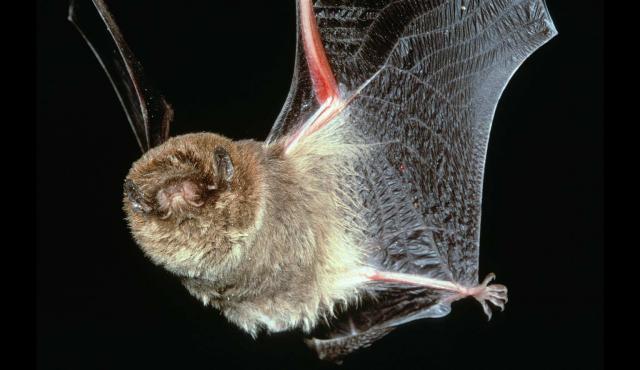A range of teacher professional learning programs will be developed to accompany the Biodiversity of the Western Volcanic Plains online outreach...

Chocolate Wattled Bat
Chalinolobus morio
Roosts in tree hollows, under bark, in Fairy Martin nests, buildings and caves. Female colonies of 6-70 have been located while males generally roost alone. Females generally give birth to one young, sometimes two in October-November.
| Details | Description |
| Type | Mammal |
| Group | Placental |
| Identifying Characteristics | |
| Distinctive Markings | There is a characteristic small fleshy lobe (wattle) at the corner of the mouth, and usually a ridge of fur across the muzzle between the eyes and the snout. |
| Diet | Carnivore. Moths, beetles, bugs, ants, flies and lacewings. |
| Habitat | Wet and dry sclerophyll forest, woodlands and mallee. |
| Native Status | Native to Australia |
| Taxonomy | |
| Phylum | Chordata |
| Class | Mammalia |
| Order | Chiroptera |
| Family | Vespertilionidae |
| Genus | Chalinolobus |
| Species | morio |

Distribution maps indicate current and historic locations where species have been sighted.
Source: Atlas of Living Australia
| Conservation Status | |
| DEPI Advisory List | Not listed |
| FFG Act | Not listed |
| EPBC Act | Not listed |
The conservation status of species is listed within Victoria and Australia.
The Department of Environment and Primary Industry (DEPI) Advisory List consists of non-statutory advisory lists of rare or threatened flora and fauna within Victoria.
The Flora and Fauna Guarantee Act 1988 (FFG Act) lists threatened species in Victoria. Under the Act, an Action Statement is produced for each listed species.
The Environment Protection and Biodiversity Conservation Act 1999 (EPBC Act) is the Australian Government’s key piece of environmental legislation, listing nationally threatened native species and ecological communities.



